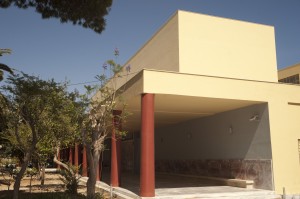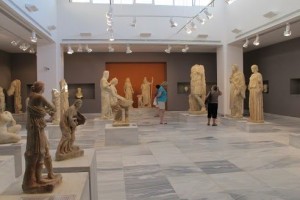 After my latest virtual hang-out with Angela and having familiarized myself with the philosophy of the project, I have come to realize that there is scope in writing on the practicalities of working as a museum curator in Greece. This blog serves as a forum of communication between museum registrars and curators from all over the world. In this framework, let me elaborate a bit on what it means to work in a public archaeological museum in a state hampered by economic crisis.
After my latest virtual hang-out with Angela and having familiarized myself with the philosophy of the project, I have come to realize that there is scope in writing on the practicalities of working as a museum curator in Greece. This blog serves as a forum of communication between museum registrars and curators from all over the world. In this framework, let me elaborate a bit on what it means to work in a public archaeological museum in a state hampered by economic crisis.
With the exception of a few museums, the New Acropolis Museum being the most famous of them, most of the archaeological museums in the country are under the jurisdiction of the newly baptized General Secretariat of Culture. This was formerly part of the Ministry of Culture and since June 2012 it belongs to the Ministry of Education, Religious Affairs, Culture and Tourism. The concept for this change was the reduction of the administrative departments within the Greek state public sector. As time goes by, this also means some form of degradation in the expectations of the members of the Greek Archaeological Service and of the museum professionals among them. The numbers speak for themselves.
 When Ministry of Culture still existed it always had the lowest budget among all Greek ministries. The so-called General Secretariat for Culture now has to fund most, if not all of its actions, through EU funded projects. These projects are approved and then run under strict specifications through the so-called National Strategic Reference Framework (NSRF). From their inception and throughout their implementation the museum or other archaeological projects are administered centrally on a national level. Nevertheless, in many cases they absorb as much as half of the daily energy of the involved museum curators in order to sustain the labyrinthine bureaucracy of NSRF. So aiming at more museum projects virtually means more bureaucracy and one naturally wonders where the exit of the maze can be.
When Ministry of Culture still existed it always had the lowest budget among all Greek ministries. The so-called General Secretariat for Culture now has to fund most, if not all of its actions, through EU funded projects. These projects are approved and then run under strict specifications through the so-called National Strategic Reference Framework (NSRF). From their inception and throughout their implementation the museum or other archaeological projects are administered centrally on a national level. Nevertheless, in many cases they absorb as much as half of the daily energy of the involved museum curators in order to sustain the labyrinthine bureaucracy of NSRF. So aiming at more museum projects virtually means more bureaucracy and one naturally wonders where the exit of the maze can be.